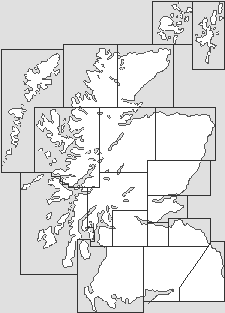 Mount Stuart on Bute |
Robert Rowand Anderson lived from 1834 to 1921. He became Scotland's leading architect at the end of the 1800s, deploying a wide range of styles ranging from Classical to Scottish Gothic and Scots Baronial.
Born in Edinburgh, Anderson initially trained as a lawyer. After completing his professional training he joined the Army, serving with the Corps of Royal Engineers. Here he took an interest in, and began to study, construction and architecture. On leaving the Army, Anderson pursued a course in architecture at the School of the Board of Manufacturers, before spending a year in France and Italy studying and drawing Renaissance and medieval architecture. He then took up a post in England, working as an assistant to the eminent architect Sir George Gilbert Scott. After leaving Scott's office in 1859, Anderson set up an architectural practice in Edinburgh in 1860.
He achieved immediate success, becoming known particularly for school buildings and church restorations. These were to be a continuing theme of Anderson's work and over the years he was responsible for renovations to, amongst many others, Paisley Abbey, Dunblane Cathedral, Culross Abbey Church and the interior of Dunfermline Abbey Church.
In 1875 Anderson was successful in the competition for the design of the Edinburgh Medical School. He went on to leave his considerable mark on the face of Edinburgh, being responsible for the Scottish National Portrait Gallery in Queen Street; McEwan Hall; the Conservative Club in Princes Street; the Catholic Apostolic Church; and the Dome which tops off Robert Adam's main facade of Edinburgh University. More widely he designed the Central Hotel at Glasgow's Central Station, an extension to Pollok House, and Mount Stuart on the Isle of Bute for the 3rd Marquess of Bute.
Sir Robert was knighted for his services to architecture in 1902. His wider renown was reflected in invitations by the Government to produce a design for the Imperial Institute in 1887; for the Queen Victoria Memorial in 1901; and for the extension to the British Museum in 1904. He was also chosen by King Edward V to design alterations at Balmoral Castle.
In 1916 a dinner was held by the disparate architectural bodies then representing individual Scottish cities to celebrate Sir Robert Rowand Anderson's receipt of the Royal Institute for British Architects (RIBA) Gold Medal. One outcome of the dinner was a series of meetings that led to the establishment of the Institute for Scottish Architects, funded by a gift of £10,500 from Sir Robert himself. The first meeting took place in Edinburgh in 1918, with Sir Robert as founder and first President of the Institute.
Sir Robert died in 1921, the year before the Institute of Scottish Architects was granted a Royal Charter and became the Royal Incorporation of Architects in Scotland (RIAS). Premises for the Incorporation were provided by the gift by Sir Robert Rowand Anderson of his town house in Edinburgh's Rutland Square, which remains the RIAS headquarters today.


